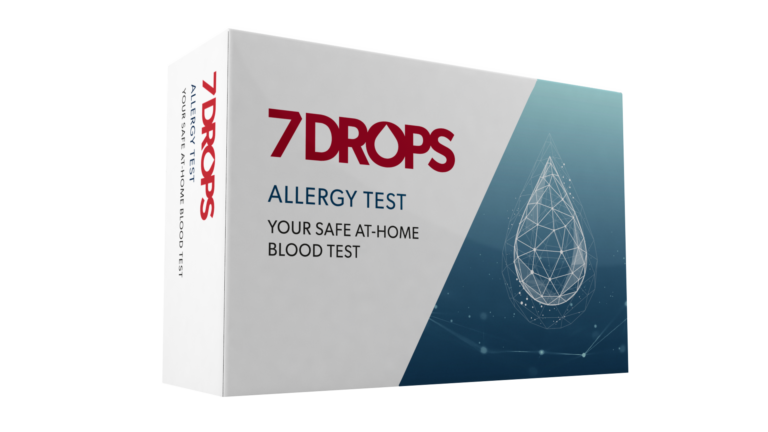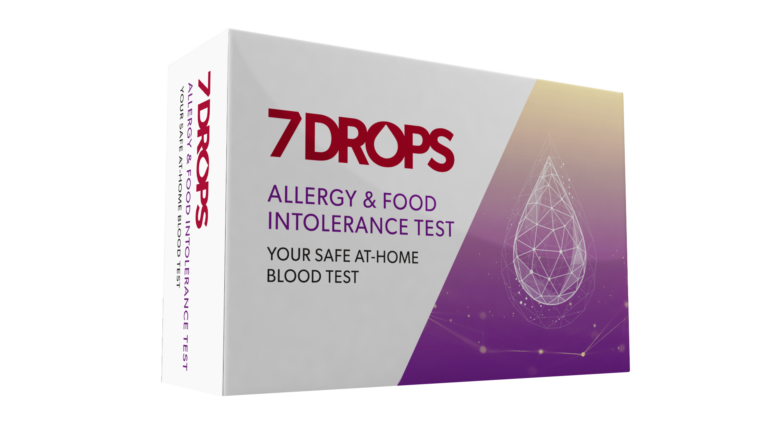TRIGGERS
- Milk
- Eggs
- Wheat
- Peanuts
- Tree nuts
- Fish
- Shellfish
- Soy
- Sesame and more
- Cross-allergies with birch, grass and ragweed pollen, dust mites and cockroach allergens
SYMPTOMS
- Tingling mouth or itching in the throat
- Swelling of the lips, tongue, face or neck
- Raised, itchy skin rash (hives)
- Swelling of the face, mouth or throat (angioedema)
- Difficulty swallowing
- Shortness of breath
- Dizziness and lightheadedness
- Abdominal pain and diarrhoea
- Hay fever-like symptoms
- Anaphylaxis


WHERE THE TINGLING COMES FROM
Tingling mouth after eating a certain food can be caused by a true food allergy or by oral allergy syndrome (OAS). Food allergies can manifest themselves in a range of symptoms: A tingling mouth is one of the milder symptoms, but some patients also experience swelling of the lips, tongue or throat, leading to more severe symptoms such as breathing difficulties and sometimes even anaphylaxis. Especially in the case of these severe reactions, prior clarification by means of a scientific test including the clarification of cross-reactions can provide safety.


FOOD ALLERGIES AND THE BIG 8
Technically, any food can trigger allergy symptoms. However, statistics show that a group of 8 allergens (sometimes 9 if sesame is included), also known as the “Big 8“, are responsible for most allergic reactions to food. The Big 8 include cow’s milk, hen’s egg, wheat, peanuts, tree nuts, fish, shellfish and soya.
Cow’s milk is responsible for most food allergies in infants. Like cow’s milk, egg is also a very common trigger of food allergies in childhood. Wheat allergy is another common food allergy in children. Fish allergies are more common in adults than in children. Like fish allergies, shellfish allergies are more common in adults than in children. Tree nut allergies tend to persist throughout life and are the most common cause of food-related anaphylaxis, along with shellfish and peanut allergies. Peanuts are one of the most common causes of food allergies in children and adults. Allergies caused by soy products are another common allergy in children, but can also occur in adults.


THE ORAL ALLERGY SYNDROME
Oral allergy syndrome is an IgE-mediated allergic reaction that occurs after eating certain foods. It is typically triggered by plant proteins that cross-react with certain inhaled allergens. The syndrome, sometimes called pollen-fruit syndrome, is caused by a cross-reaction of allergens found in pollen as well as in raw fruits, vegetables and some tree nuts. Here is an example: It is possible for patients who are allergic to birch pollen to develop oral allergy syndrome when eating apples. This is a so-called cross-reaction caused by the structural similarity of birch and apple allergens and leads to a tingling, itchy feeling in the mouth. Typically, the symptoms described above occur immediately after eating the food or within five minutes at the latest.
CROSS ALLERGIES WITH POLLEN, MITES AND FOODS
It is known that certain pollens often cross-react with certain fruits, vegetables and nuts. Patients allergic to birch pollen often react to eating apples, almonds, carrots, celery, cherries, hazelnuts, kiwis, peaches, pears and plums. Patients allergic to grass pollen often react to celery, melons, oranges, peaches and tomatoes. Similarly, ragweed pollen can cross-react with bananas, cucumbers, melons, sunflower seeds and courgettes. In addition, similarities in dust mite and cockroach allergens, as well as seafood allergens, lead to similar cross-reactions.
Our products
The best test for you



Allergy test
- Original price was: £ 345.£ 299Current price is: £ 299.
- 295 ALLERGIES
- -
- At-home allergy test
- IgE based
- Blood collection through finger prick
- Recommended by doctors



Allergy and food intolerance test
- Original price was: £ 499.£ 345Current price is: £ 345.
- 295 ALLERGIES
- 286 FOOD INTOLERANCES
- At-home allergy & food intolerance test
- IgE + IgG based
- Blood collection through finger prick
- Recommended by doctors

